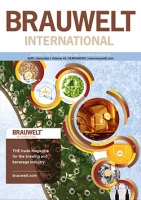Cost leadership, ultra-affordable pricing, a complete range of products and (inter)national distribution are the four cornerstones on which the Oettinger company has been built. Doing without media advertising and costly packaging is part of the overall concept. The first non-returnables glass line has recently been commissioned at the headquaters in Oettingen. The line will mainly produce for export and was manufactured and installed by the Krones AG.
In order to produce consistent fermentation performance and controlled beer quality, it is essential that yeast stocks are managed in such a way that variability in physiological condition is minimal. Providing that this is accomplished and there is adequate control of other important variables such as wort composition and oxygen concentration, fermentation performance is governed, in a large part by the yeast pitching rate. It follows that procedures that lead to precise and repeatable control of yeast pitching rate will result in consistent fermentation performance (2, 3).
The first part of this contribution (Brauwelt International 22 (5) 332, 2004) dealt with interrelationships between individual parameters of bottle conveyers affecting filling capacity and with calculations required to determine the number of conveyer and buffer times. In the second part, an overview is given on the layout of bottle conveyers, together with equations for calculating buffer zones.
Use of kieselguhr for beer filtration has been widespread for over 100 years in breweries, and experience has been gained in its handling. Disposal of spent guhr is subject to waste regulations. This field report describes dewatering of spent kieselguhr using an automatic filter press supplied by Larox and the advantages associated with same.
This paper introduces a new technical development with centrifuges that Flottweg GmbH has made for beer recovery from fermentation yeast. The machine is called a Sedicanter® and was developed to process "soft2 products such as yeast, bacteria, protein precipitates, etc, where traditional decanters and other centrifuges have had trouble achieving satisfactory separation.
FNE Forschungsinstitut für Nichteisen-Metalle GmbH has developed a thermal treatment process for kieselguhr and tested it together with Freiberger Brauhaus AG. The process itself is characterised by low running costs and complete utilisation of the recovered kieselguhr. The suitability of recycled kieselguhr for commercial operations has been proven in two extensive test series.
At consumption rates of an average of 150 g of kieselguhr/hl of unfiltered beer, about 72,000 tonnes of brewery kieselguhr slurry arise in Germany every year. Disposal of this costs money. As a rule, disposal is through utilisation in agriculture as a soil aggregate and a plant nutrient. A regenerated kiesel-guhr is produced which can be used again in beer filtration.
....


